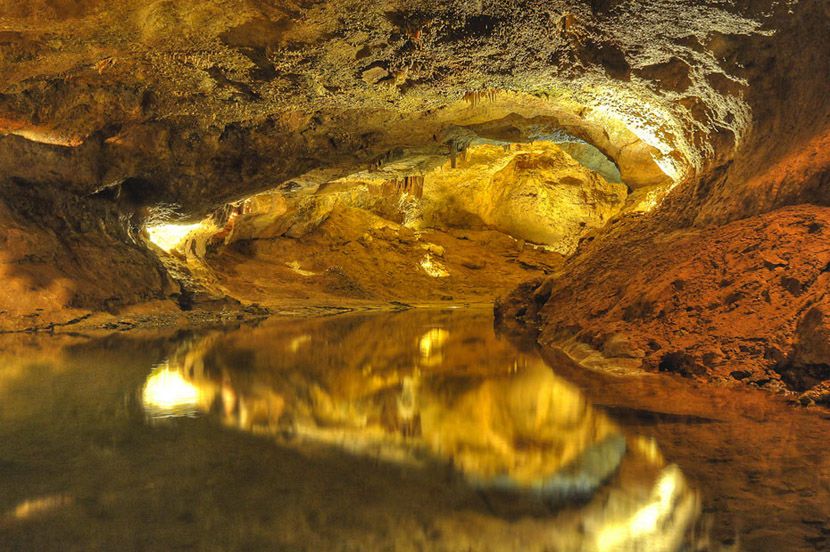

Welcome to Saint Joseph’s Underground River Caves. They represent an impressive Karst complex formed by five interconnected caves. The entire complex is name after the largest cave known as the Saint Joseph’s or the Fountain’s, for being an active hypogeal upwelling of water which is the source of the Belcaire River. With such water volume, has made the river navigable most of its course, and because of that the cave has been declared of tourist interest managed by the Town Council of Vall d'Uixo.
Note: In this web page is not avaliable all audios. You can rent this audio guide service in Saint Joseph’s Underground River Caves.
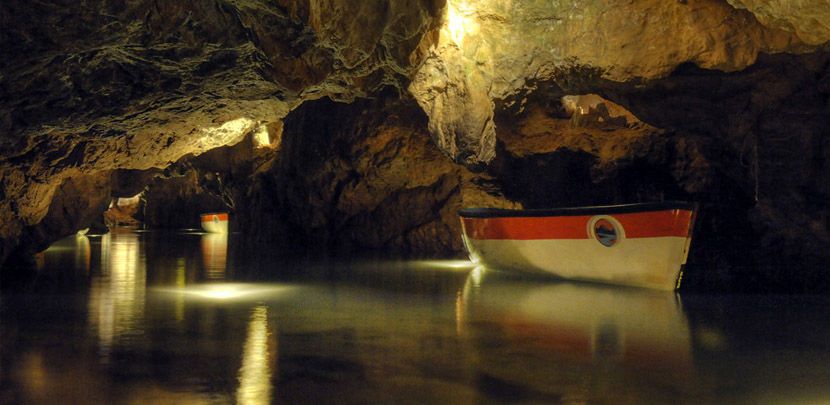
Today it has been explored and mapped 2,384 meters, but this is not the cave’s total length, and despite multiple visits by speleologists, the origin of the river has not yet found nor the cave’s end. To the left it can be observed some cave paintings from the Paleolithic era which have been declared World Heritage Site by the Unesco. They have a reddish color due to the mixture of natural and mineral pigments, such as ocher crushed with dissolved animal fat and oils. They are undulating lines, which are thought that they represent the river. Due to the continuous water dripping and moisture, a lime film is forming which prevents having a clear look at the paintings.
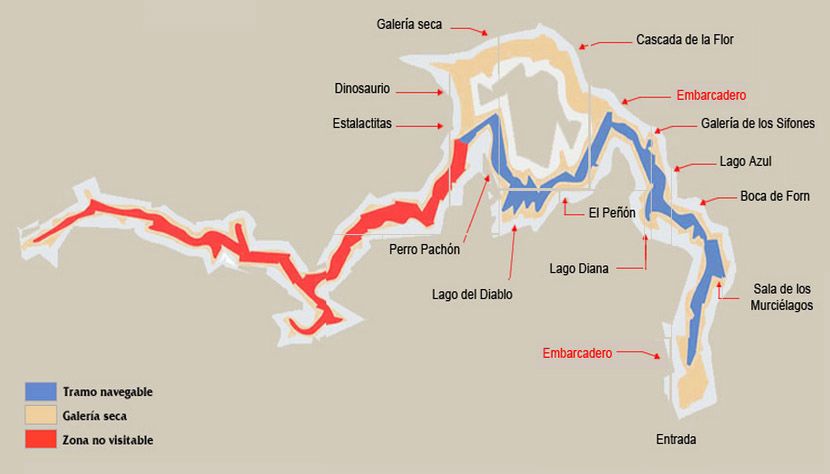
The proximity of an Iberian settlement also indicates that at that time the cave was already known and explored, as well as during the long Roman rule, due to a gravestone found which is dedicated to Caio Cneo Crassus, son of the Roman consul Marcus Licinius Crassus.
Now to the right, we can see a recess that has been used as a habitat by human groups in prehistoric times, which is known today as "Archaeologists Gallery", as it’s from where you access to the back of the cave to do some excavation. Inside the mountain where we stand now, its galleries are part of the same cave with karst formation, made by water streams that run beneath the earth's surface due to water infiltration.
Moving on to the pier with the audioguide, again to the right, we find an archaeological site which belongs to the "Magdalenian" period during the Paleolithic era. These rocks collapsed in 10,000 BC as a result of a cataclysm. Archaeological excavations conducted by the Municipal Archaeological Museum of Vall d'Uixo, revealed an occupational sequence with Solutrean, Magdalenian and Bronze Age levels, as well as two cave paintings panels. Researchers collected sediment samples from the ground such as shells, regurgitation of birds, excrements ... which were able to date them from the year 17,000 BC.
We’ve already embarked with the audioguide and the adventure begins. This trip takes 40 minutes on a tour of 1,050 meters, of which 800 meters are by boat and 255 meters on foot. The water and environment temperatures remain constant throughout the year: the water is 17 degrees Celsius (63 degrees Fahrenheit) and the environment temperature is 20 degrees (68 Fahrenheit). From this moment you are going to be spectators of fancy formations which nature has led over the years to this wonderful Cave.
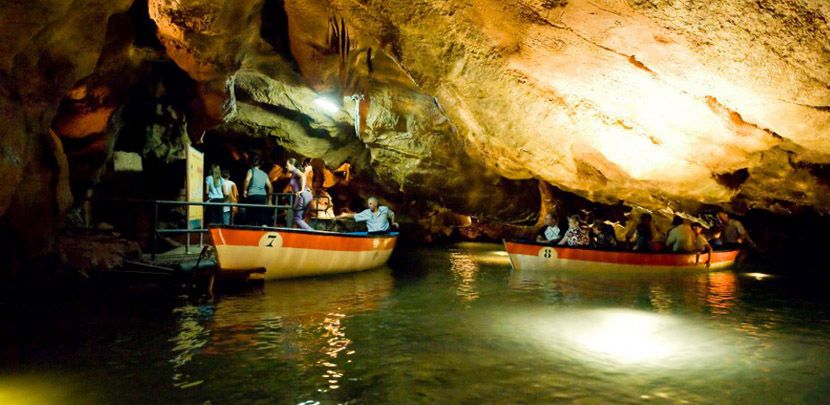
For safety reasons and everything runs quietly, please remain seated and quiet during the whole journey and keep your hands always inside the boat. It’s not allowed to take pictures, to touch the walls nor the Cave’s formations.
We start the trip with the audioguide moving over a depth of two meters, to reach the first and one of the most spectacular Cave’s rooms, "The Hall of the Bats". It’s 10 meters wide and 35 meters long. This room is named like that because it was inhabited by thousands of bats in the past. On the ceiling we can see an interesting sample of large and numerous "upside-down cavities".
In the distance we can make out the rounded silhouette of a small tunnel called "Ride of Love", name like that because when you bend over, you almost have to kiss the person who is in front of you in order to go through. It’s 17 meters long and 4 meters deep, and it’s the first artificial tunnel we come across a long the way.
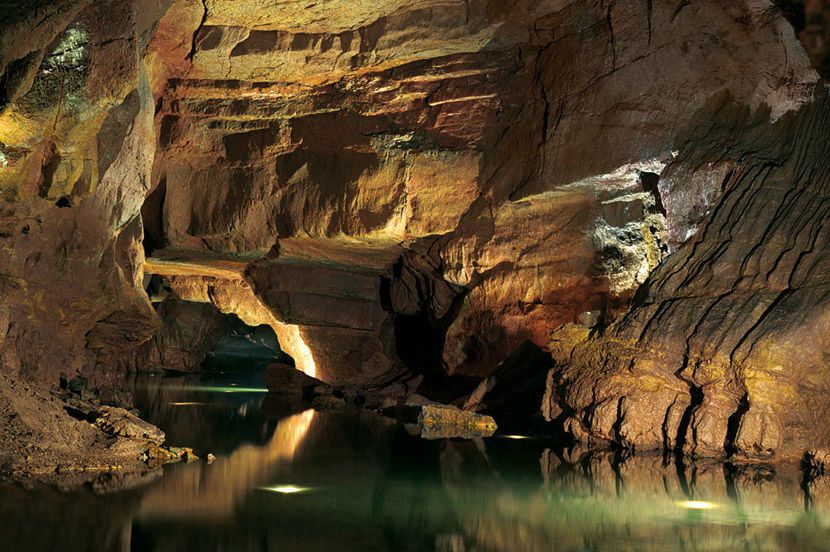
Leaving the Ride of Love, we find the unexpected and captivating presence of "The Diana Lake". It’s 5 meters deep and its name is due to the rounded shape that evokes in the viewer once passing through it. In this room, on the ceiling to the left, we can see a large flowstones called "The Manila Shawl", and to the right, the formation of small stalactites. Now we find the Moreneta room and right after, the Hall of Mirrors, where in the distance we can see the shadow of a small tunnel. Just before the tunnel to the right is "The Blue Lake" which is 12 meters deep, being the deepest area of the underground river.
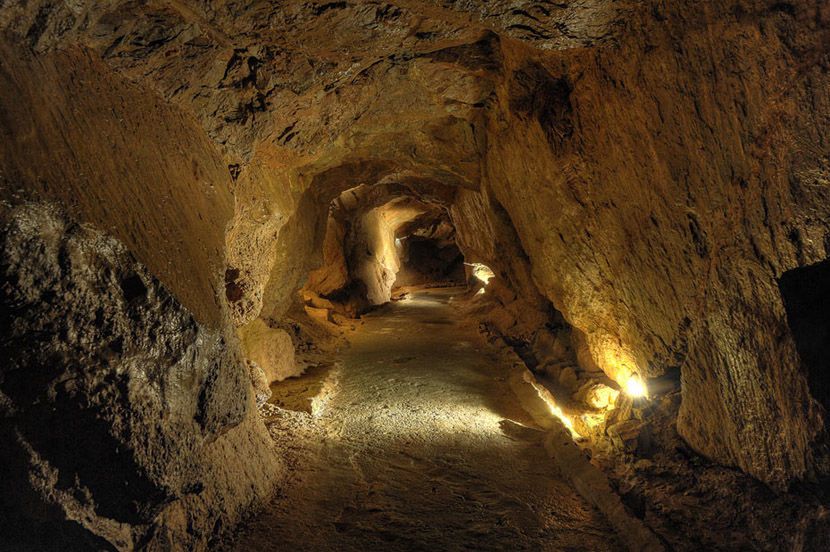
The tunnel is known as "The Siphons’ Gallery". It’s 36 meters long and 8 meters deep. Previously it was made up of three consecutive siphons that avoid the continuation of the journey, but in 1960 the speleologists group “Vilanova i Piera” from the Valencia’s County Council Offices, proved the continuity of the cave after overcoming in a dive that point. In 1961, complex dynamite blasting allowed to open a passage and find the dry gallery, which would be open to the public in 1973. In the following years new galleries and siphons were discovered. Further ahead we’ll land on the dry gallery. Follow the boatman’s instructions to disembark safely from the boat.
We are now with the audioguide in the dry gallery. From here we’ll walk 255 meters to get to another pier, where we’ll come aboard again on the same boat to finish the tour, so you we’ll need to remember your boat’s number. It’s not allowed to take pictures, to touch the walls nor the cave’s formations. The river’s watercourse used to run this gallery, but due to fall of water level, the river abandoned this natural course. Along the way, it can be seen interesting rock structures that have been formed by water passing through over centuries. We’ll see along the way “The Crocodile Lake”. There we’ll find an eroded rock which evokes this animal sunbathing peacefully.
Next to the Crocodile Lake, if we look up, we’ll see one of the Cave’s most beautiful formations, The Flower’s Waterfall, with its 17 meters of parietal flowstone on either side of the walls.
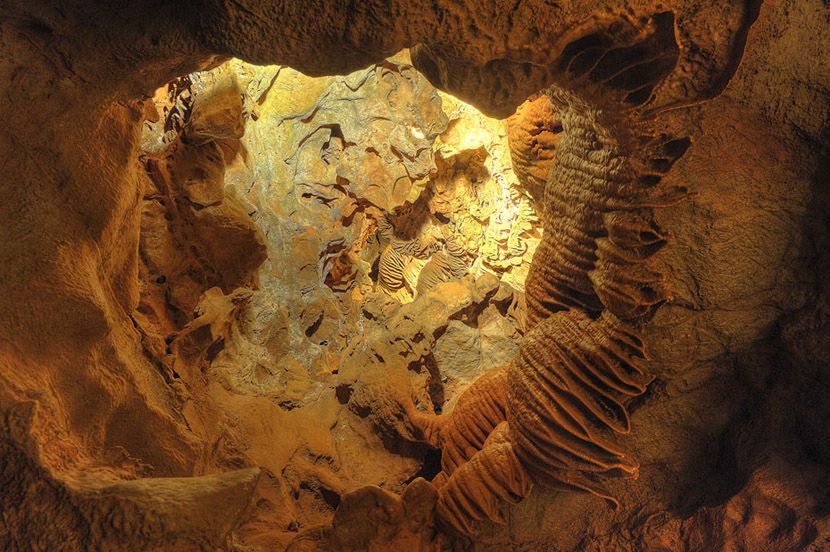
And now a few meters ahead, The Face of the Devil, erosion that has been formed over time and torrential rains, which have carved this sinister figure. Immediately thereafter, we can see a big dinosaur-shaped figure. At the end of the gallery you’ll find a pier. Look for your boat number and follow the boatman’s instructions to board safely.
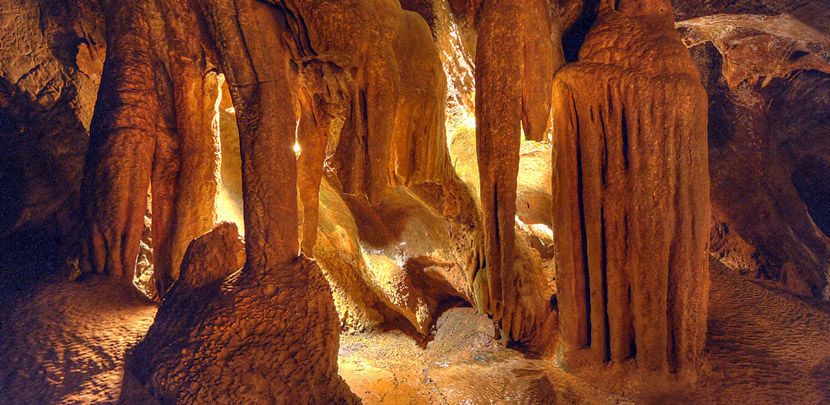
We are in the cave’s innermost part. This room is called the glens. From this point to the right, it’s two more kilometers which are explores but are not adapted to the visit. The source of the river is in that direction but it’s still unknown. We begin now our going back, this part of the route ahead is equivalent to the path we’ve just walked on foot with the audioguide. The course of the river that we’ll navigate is a few meters below the dry gallery’s floor and describes an opposite and symmetrical semicircle to the one we’ve just seen. The join of both ends draws a circle. We´ll now navigate over a minimum of 50-inch-depth.
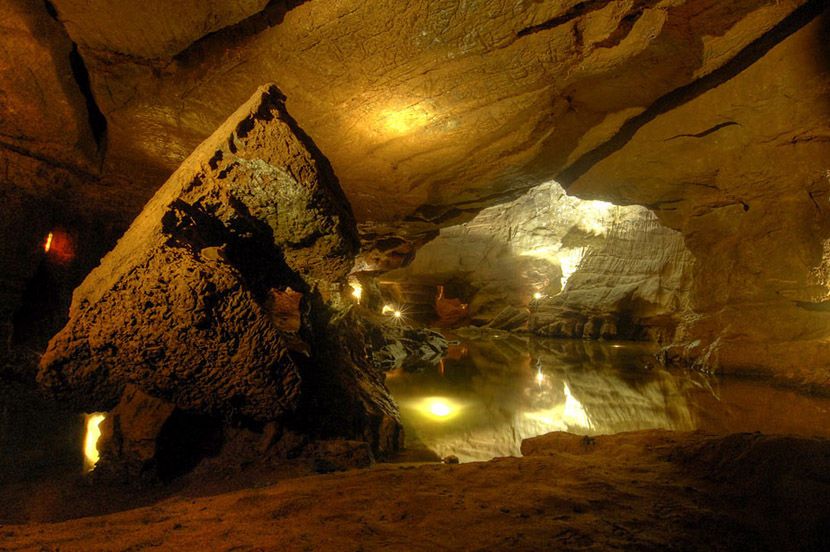
Now you’ll be able to see "The Pachón Dog". It’s a rock that is located within the river course near the right bank. Before getting to it, it looks just like a rock but once passing by and looking back, we discovered the resemblance it holds. Going on, a little bit further we’ll see along the way beach-shaped rooms on both sides.

We arrive with the audioguide at a dark lake of about two meters deep, which is known as "The Devil's Lake". It has an air of mystery and just ahead we find "The Comb". Let’s bend over in order not to hit it. It has a rectangular shape with protuberances that look like teeth. Over the years it has earned that name.
Once passing by The Comb, we can spot to the right "The Rock". It’s one of the largest landslides that can be found today in the Saint Joseph’s Cave. It’s due to the dissolution of rocks by water, a characteristic of a karst landscape.
Once we pass by the Rock we find "The Cathedral", named like that due to its spectacular 12-meter-high and only 70-centimeter-deep. The walls have pronounced marks from the old watercourse. As you can see we’re approaching the pier where we previously got off to walk through the dry gallery. We’ve already navigated half of the semicircle which surround the dry gallery. Leaving aside the pier, we head back to the Siphons’ Gallery again, but this time in opposite direction.
From this point, we’ll take the same route we took before, but going in opposite direction many things are going to look different to us.
After passing through the Siphons’ Gallery, the Hall of Mirrors appears in front of us, named like that because when the water is calm you can behold the cave’s walls on its waters.
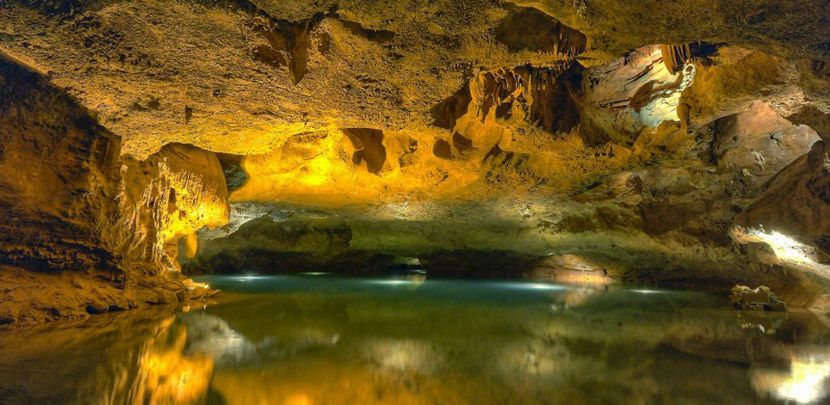
And now, when entering the Moreneta room, we discover on the ceiling the cave’s biggest stalactite. Taken into account that one cubic centimeters of stalactite takes a hundred years to form, it’s estimated that it’s 35,000 years old. Some people find a resemblance to an organ church... the truth is that it doesn’t have a specific name.
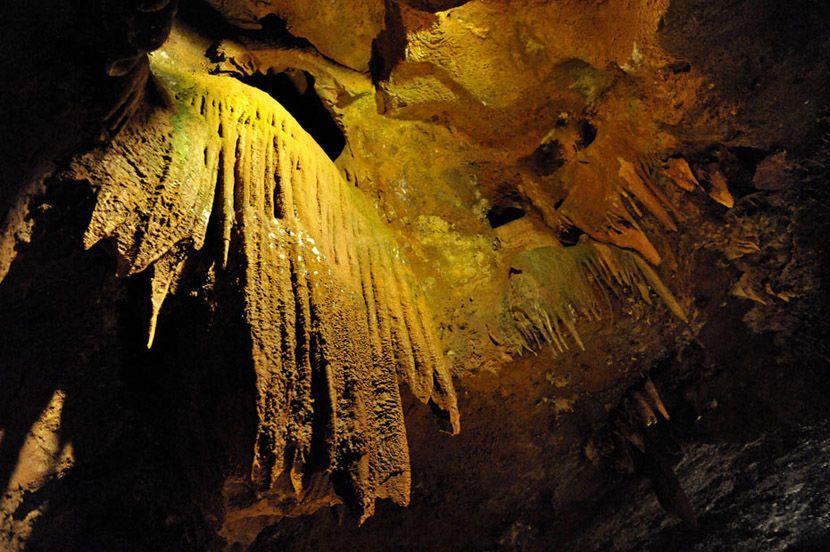
In this same room and a few meters ahead, we can see on the ceiling to the left, "The Medusa". It is one of the Cave’s most famous formations due to its singularity. Its base is a floating disc that has form from the inside out. Then Diana Lake opens again before us.
Once going through the Ride of Love’s siphon, entering "The Hall of the Bats" we can behold one of the most beautiful views of the entire visit. In the back of the room and in front of us, is "The Nativity Scene". Is it true that looks alike? Near the end of the journey is "The Stone of Happiness". We’ll make an exception and we’ll go around the rock, so that it can be touched and make a wish, that we hope it comes true. Once we reach the pier our journey ends. We remind you to hand in the audioguide at the reception. You can also purchase the picture Memory of the Journey by boat and cave’s souvenirs. We would like to thank you for your visit and we hope you’ve enjoyed it.
Bluehertz Audio guides has developed for Saint Joseph’s Underground River Caves an audio guide service avaliable in Spanish, English, French, German, Italian and Rusian languages.
Saint Joseph’s Underground River Caves address: Paraje Grutas de San José s/n, 12600 - La Vall d´Uixó, Castellón.
- Tel.: +34 964 69 05 76 - reservas@riosubterraneo.com - covesdesantjosep.es -
Back to index